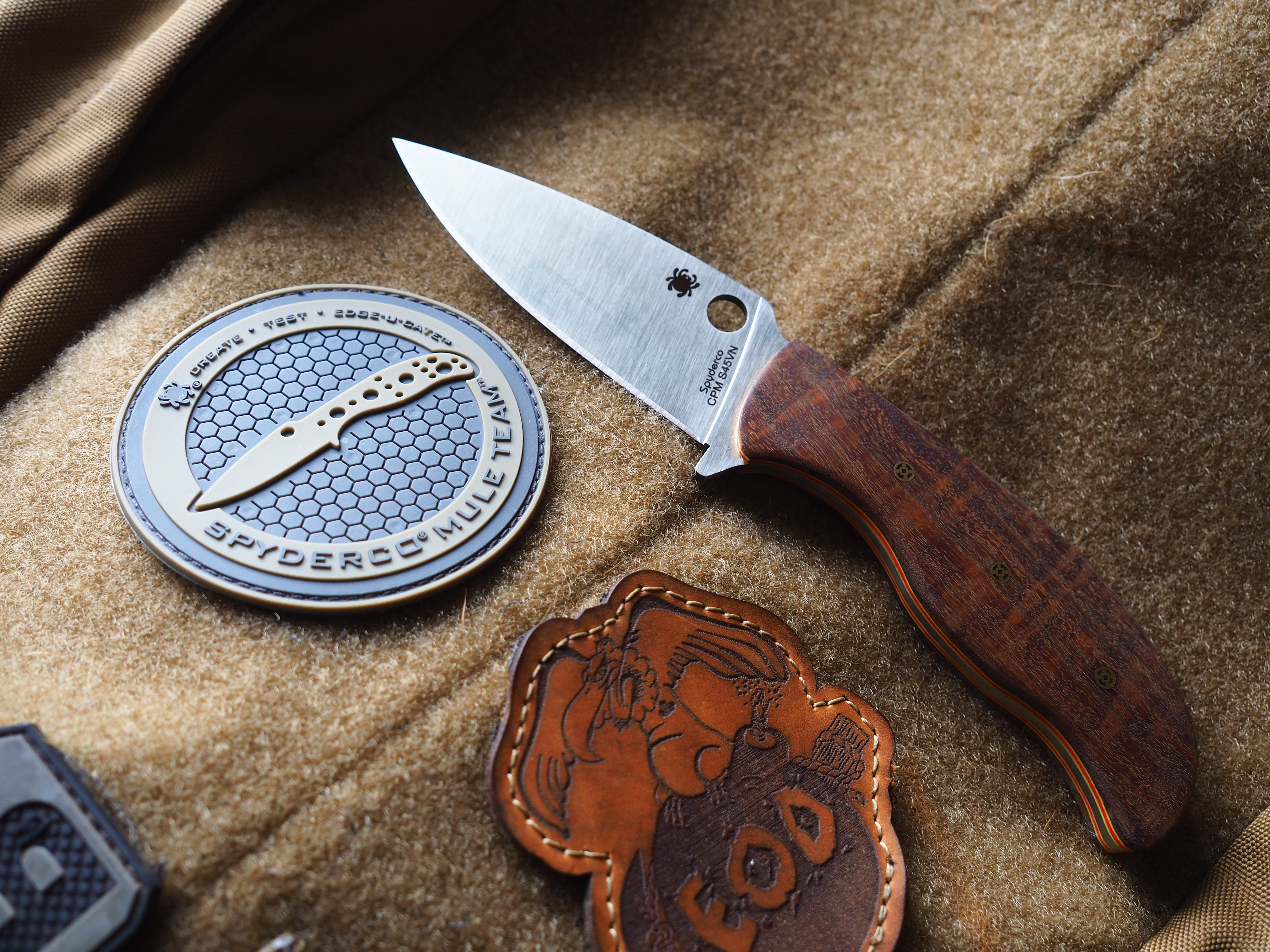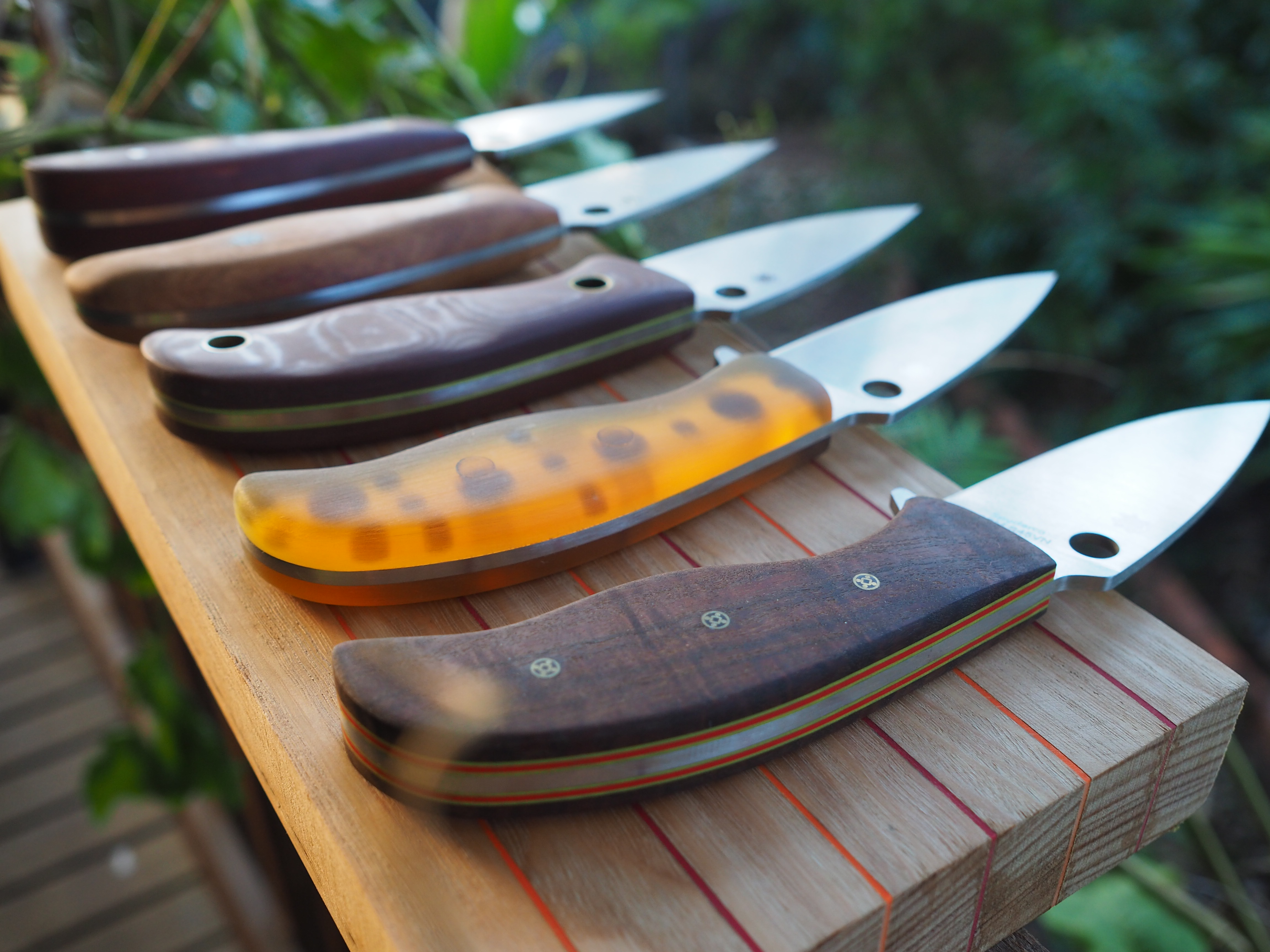Mage7 wrote: ↑Sun Apr 27, 2025 1:05 pm
weeping minora wrote: ↑Tue Apr 22, 2025 5:54 pm
Coastal wrote: ↑Tue Apr 22, 2025 4:31 pm
Can't believe there are any AEB-Ls left.
Available for just over 2 years now, with 99 left in stock per the Spyderco website, as of this posting.
I am not at all surprised to see this Mule still around. I believe VG-XEOS will befall this same fate, too, which IMO is ultimately a death knell for steels within this class, to be introduced within this format.
I've just been hesitant to pull the trigger on AEB-L because I feel like I will be disappointed in it. There's sort of... Well, I don't know how to put it, but I'll call it a conflict of terminology that makes me uncertain that it will have the characteristics that I want.
For example, Larrin's article about AEB-L says...
Thin edges sharpened to acute angles cut much better than thick edges. This is called “cutting ability” which is the energy required to cut through something. This is different than sharpness. An axe can be sharpened to very high sharpness but the energy required for cutting remains relatively high. A knife with high cutting ability, even while dull, will keep on cutting depending on the material being cut. You can read about the differences between sharpness and cutting ability in this article. Thin edges with acute angles need very high strength (hardness) to avoid rolling and deformation, and high toughness to avoid chipping. This combination of strength and toughness is called “edge stability,” which you can read about here. AEB-L with its high toughness has very good “edge stability” meaning it is very well suited for high cutting ability edges. Thin edges do not just cut better, however, they also have much better edge retention. That means that when AEB-L is used in knives with thin, acute edges where it excels relative to the more wear resistant steels that have poor toughness, the edge retention will match or exceed those more wear resistant steels. So AEB-L knives can have both better cutting ability and edge retention than more wear resistant steels when used with an edge geometry where it excels.
https://knifesteelnerds.com/2019/03/04/all-about-aeb-l/
Essentially my worry is that the ability of AEB-L to hold a very acute and stable edge which increases its cutting ability, won't actually grant it the ability to retain keenness (to borrow Todd Simpson's term for what Larrin refers to as sharpness).
In other words, I'm not really interested in an an edge that will retain its ability to wedge its way through cardboard longer by merit of its geometry, as much as I want an edge that retains a very keen apex after cutting the cardboard.
So far, I have found high hardness to be the ticket to where I wanna go. T15 and Rex45 have been the best for me in this aspect, and as far as I can glean, both are well over 65 HRC. When I saw a video from Shawn Houston stating the batch hardness for the AEB-L Mule run was around 62-63 HRC, that sort of made me doubt it will have the characteristics of T15 and Rex45 that I like.
Of course, I may be completely misunderstanding, but without someone informing me otherwise, that's why I'm abstaining from grabbing one. I figured I'd leave them around for people who are more interested in "cutting ability" than maximizing the retention of keenness.
What you are experiencing is the massive increase in wear resistance and aggressive cutting characteristics of T15 and REX45, as it's the increase in type, volume, and hardness, of the carbide content in T15 and REX45 to resist the abrasive wear that gives the perception of retained sharpness/keenness, versus a steel like AEB-L, which does not have the compositional content to form carbides with the ability to compete in this regard (to resist abrasive wear) no matter the hardness range.
AEB-L holds stainless and toughness advantages over T15 and REX45, with the ability to hold a much more acute edge geometry without catastrophic failure (much greater edge stability). This is majorly due to the incredibly small percentage, size, and distribution of carbides in AEB-L, which is both its advantage, and disadvantage (when compared directly to 'super steels').
Due to the ability of AEB-L to hold lower angles in overall geometry, less actual force is required for the user to cut material, thusly increasing the cutting performance of the steel. This does not increase the overall wear resistance, but it will noticably increase the
perception of such, meaning that the overall loss of sharpness isn't quite as detrimental due to AEB-L's ability to retain shape at such low geometries. Larrin is describing the actual perceivable force loads that would be required to cut material via differing geometries. To display his point, a freshly sharpened axe will still require more force to separate materials than a dull razor blade, due to the large difference in their physical geometries.
AEB-L at a hardness of 62-63 offers much greater wear resistance (which is very respectable, IMO) than the more typical 58-60 hardness range of production knives, whilst still retaining incredible toughness. Of course, whilst the wear resistance is increased between these two hardness ranges for AEB-L, it will still be considered mediocre for those who are used to the K390 class of steel being a baseline for their steel 'requirements'.
Greater cutting performance is something more appreciable to those who require ultra precision in their work, like cutting proteins, fruits, veggies, etc. in kitchen work. Conversly, greater abrasive wear resistance will be appreciated by those who value longevity via repetitive cutting applications. Different knives for different lives.
Make Knife Grinds Thin Again.

